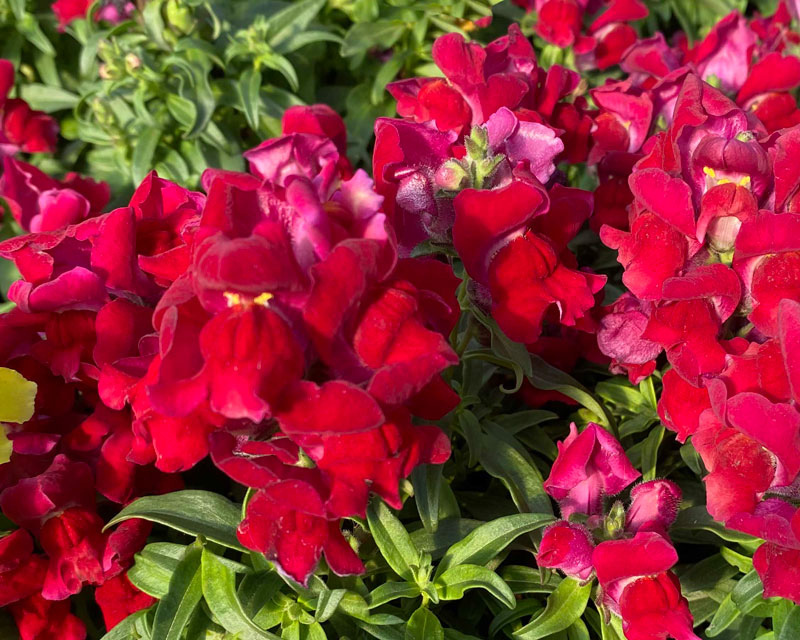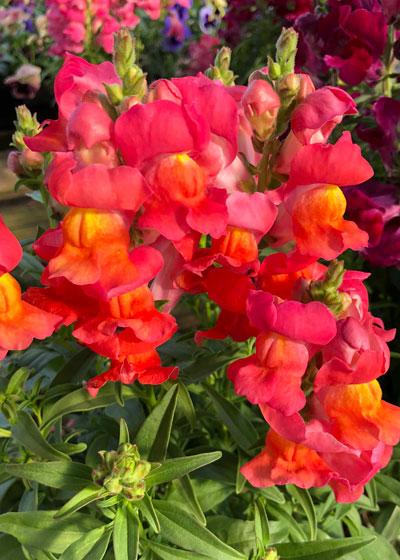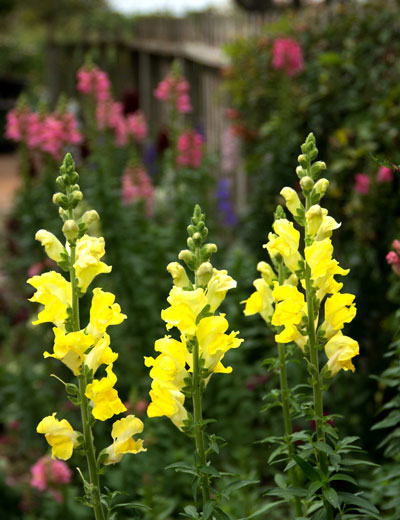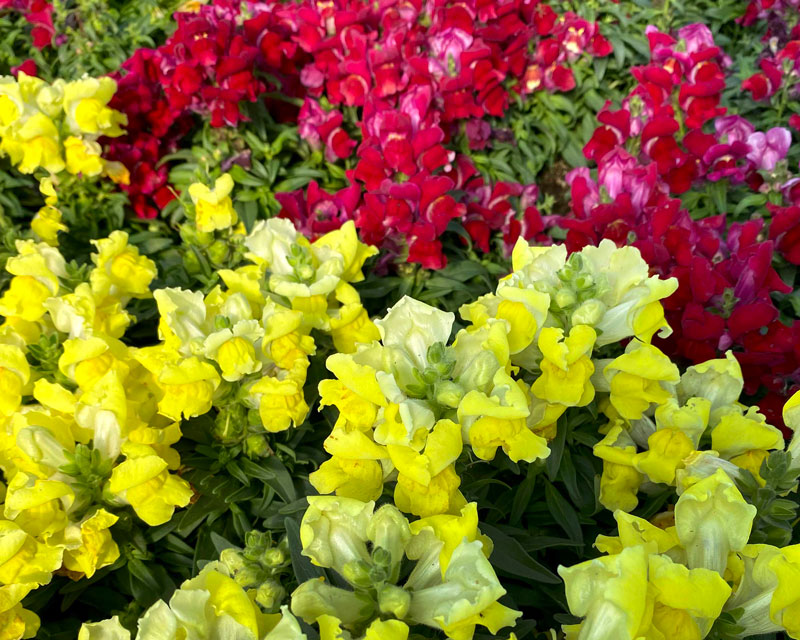Put some snap in your bloomers!

The first time I saw snapdragons (a.k.a. “snaps”) in a landscape in Texas was in front of the old Floriculture Department greenhouses at Texas A&M. I’d seen plenty of them in flower shops and seed catalogs, but there they were in real life, right there in my hometown, College Station, Texas.
I was just dazzled. But what had happened to those beautiful snapdragons? They were in full bloom, but they were only 6 inches tall. Certainly not fit for a floral arrangement. I looked down at the label, and they were the first dwarf snaps I’d ever seen, the lovely little Floral Carpet series. They were dwarf snaps meant to be used in the front of a flowerbed border or at the edge of a large patio pot where they could play the parts of the “fillers” or “spillers.” (Two terms that wouldn’t be used for some 40 years later.)

That perked up my interest in snapdragons in general, but that was just in time for me to transfer from TAMU to Ohio State. There are a lot more snaps used in gardens in Ohio than there are here in Texas, yet it’s still not a mainstay garden flower. They also plant theirs later and enjoy them way into the summer. We Texans plant ours in the fall in South Texas or in late January or early February in North Texas so we can enjoy them as winter winds down and spring starts to unfold.
But enough of that. Let me just stop with the narrative and give you the pointers.


Coral red and tall yellow snapdragons bring bright colors to their surroundings.
What you need to know to grow snapdragons…
• Cool-season annuals, so plant from potted nursery transplants in fall where they can be protected from temperatures below the mid-20s.
• Buy as potted transplants, probably in 4-inch or even quart pots in bud and bloom.
• Know the mature height of the varieties you’re choosing. There are modern hybrid selections that stay very short – to 6 or 8 inches.
• Others have been bred to go to the backs of your flowerbeds as they bloom at 16 to 24 inches.

• The taller cutflower types grow to 36 inches and taller, but they will require support, so you might want to hide all that hardware in the vegetable garden. Otherwise, you’ll certainly want to plant those at the back of your beds where they can all be camouflaged by shorter flowers in front.
• Snaps need rich, highly organic soils, so incorporate 5 or 6 inches of a mixture of various kinds of organic matter and 1 inch of expanded shale and rototill to a depth of 8 to 12 inches.
• Plant them where they will receive full sun.
• Take this the right way: to someone who grows snapdragons as cutflowers, bees are the enemies. Once a snap flower has been pollinated, that bloom will fall from the plant. They bloom from the bottoms of the stems upward. If a stem loses many of its flowers it soon becomes leggy looking. Breeders have worked to produce varieties whose flowers are unattractive or inaccessible to bees.
• Fertilize your plants every couple of weeks with a high-nitrogen, water-soluble food that will keep the plants vigorous and growing actively.
• Snapdragons are fine companions for your pansies, pinks, and other winter color plants. They don’t bloom as long as the others, but they will often come back for a second round of blooms if you keep the old stalks removed and the plants well cared for.

